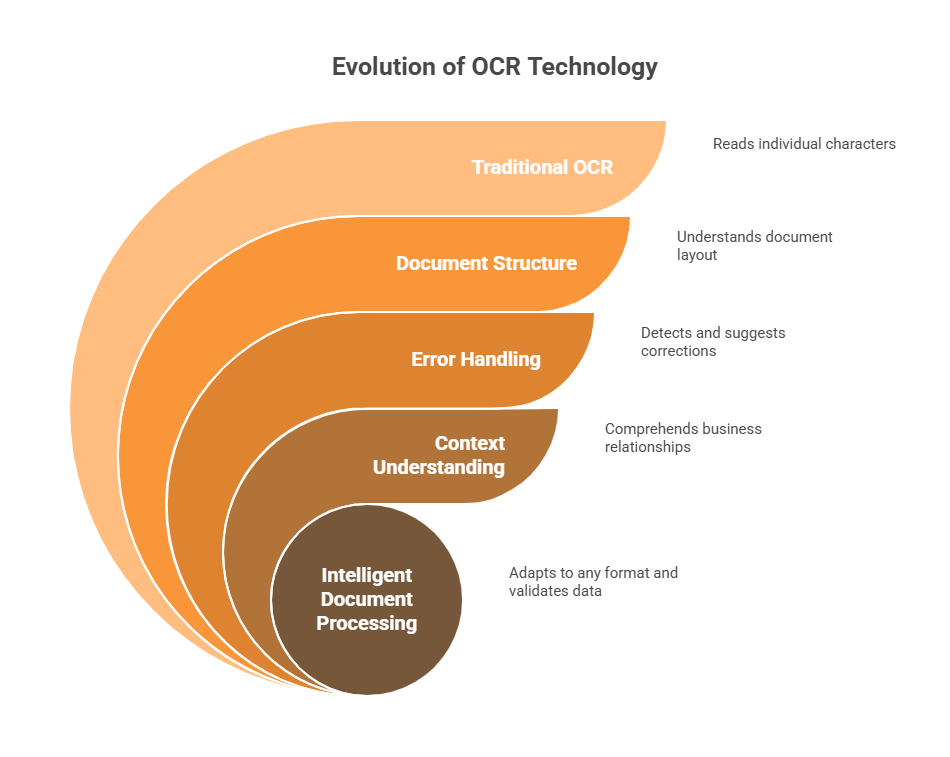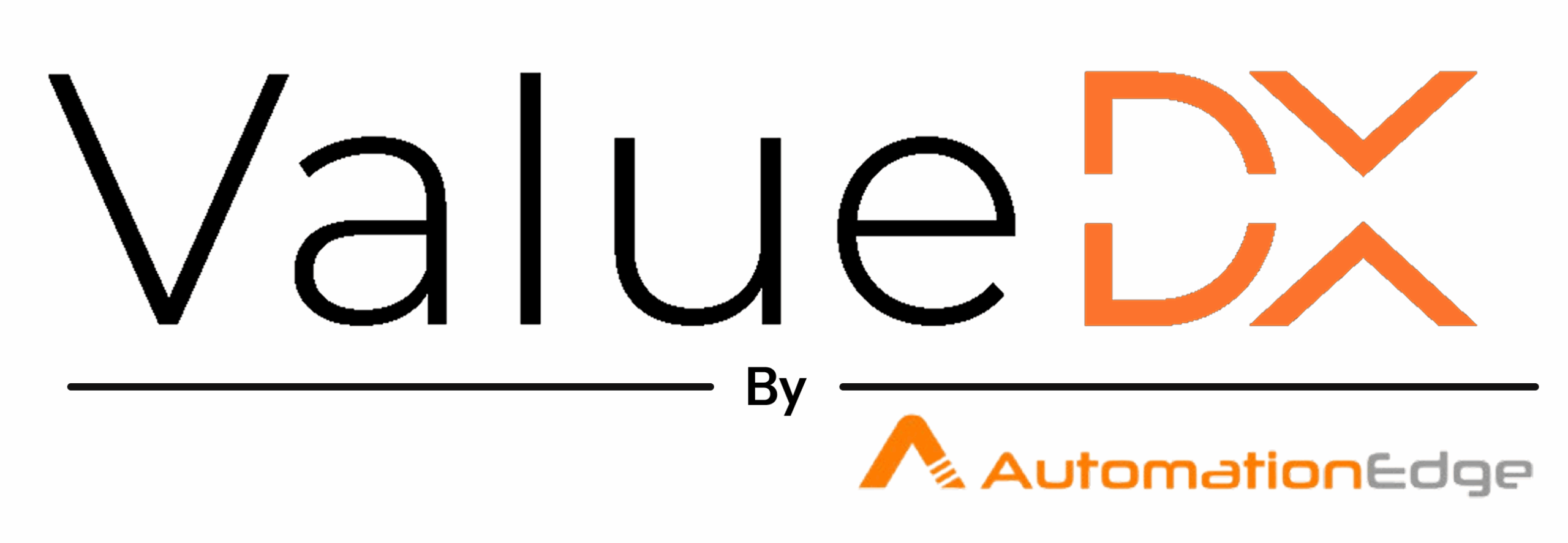
I’ll never forget watching my client’s face as his expensive OCR system completely butchered a handwritten invoice from their biggest supplier. “System extracted: ‘Amount: 7,00,00Z’ instead of ₹7,00,000,” he said, pulling up the screen. “We’ve spent six months training this thing, and it still can’t read basic numbers consistently.”
That’s when I realized the fundamental problem with traditional OCR – it’s essentially a very expensive photocopier that tries to guess what text says, but has no idea what any of it actually means.
The OCR Limitation That Nobody Talks About
Here’s what most people don’t understand about traditional OCR systems. They’re like that friend who can read out loud perfectly but has no comprehension of what they’re reading. They see characters and try to match them to letters and numbers, but they have zero understanding of context, relationships, or meaning.
I watched one company struggle for months with their OCR system that would consistently read “Invoice Date: 15/03/2024” as “Invoice Data: 15/D3/2024” because it couldn’t distinguish between similar-looking characters. Every error required manual correction, defeating the whole purpose of automation.
The bigger problem? OCR systems treat every document like a random collection of text, ignoring the fact that invoices have logical structures, relationships between data points, and business rules that govern what makes sense.
What Intelligent Document Processing Actually Means
Intelligent Document Processing (IDP) is like having an experienced AP professional who understands not just what text says, but what it means in the context of business processes. Instead of just reading characters, IDP understands document structure, data relationships, and business logic.
I watched an IDP system process a complex multi-page invoice with line items, GST calculations, and discount structures. Instead of just extracting random text fields, it understood that the line items needed to add up to the subtotal, that GST should be calculated at 18%, and that the final amount should match the sum of all components.
When it found a discrepancy, it flagged it for review with a note: “Line item total doesn’t match invoice subtotal – possible calculation error.”
The Intelligence Behind Modern IDP
Modern IDP systems use machine learning to understand document types, business rules, and data validation in ways that make traditional OCR look primitive:
| Traditional OCR | Intelligent Document Processing |
|---|---|
| Reads individual characters | Understands document structure |
| No context awareness | Comprehends business relationships |
| Template-dependent accuracy | Adapts to any format automatically |
| Character-level errors | Self-validates extracted data |
| Manual error correction | Intelligent error detection and suggestions |

I saw one IDP system process invoices in Hindi, English, and Marathi from the same vendor, extracting accurate data from all three languages without any special configuration.
Real-World IDP Capabilities That Amazed Me
What really opened my eyes was watching IDP handle scenarios that would completely break traditional OCR. A vendor submitted a partially handwritten invoice with printed headers but handwritten amounts. The IDP system not only read the handwriting accurately but validated that the handwritten totals matched the printed line items.
Another time, I watched it process a photographed invoice that was slightly angled and had coffee stains covering part of the vendor address. The system corrected the perspective, worked around the stains, and even suggested the complete vendor address based on partial information it could read.
But the most impressive part? It extracted data from a completely new invoice format it had never seen before, understood the document structure automatically, and processed it with 99% accuracy.
The Business Logic Integration
What sets IDP apart is its ability to apply business rules during extraction. When processing Indian invoices, it automatically validates GST numbers against government databases, ensures TDS calculations follow current tax rates, verifies that e-invoicing requirements are met, and cross-references vendor details with your existing records.
I watched one system catch an invoice where the vendor had incorrectly applied 12% GST instead of 18% on a service. Instead of just extracting the wrong amount, it flagged the error and suggested the correct calculation.
Beyond Accuracy: Understanding Intent
Traditional OCR focuses on accuracy – did we read the text correctly? IDP focuses on understanding – do we comprehend what this document is trying to communicate?
I saw an IDP system process a credit note that looked similar to an invoice. Instead of just extracting the amount as a payable, it recognized the document type and correctly processed it as a credit against the vendor balance.
The Processing Speed Revolution
Despite all this intelligence, modern IDP actually processes documents faster than traditional OCR. Because it understands context and structure, it can extract relevant data more efficiently without getting bogged down in character-by-character analysis.
One client told me their IDP system processes invoices in under 30 seconds compared to 5-10 minutes with their old OCR system, while achieving 98% accuracy versus 75% with OCR.
How ValueDX Delivers True Intelligent Document Processing
What impressed me about ValueDX’s approach is that they’ve built IDP intelligence into the core of their AP automation platform. Their AI doesn’t just read documents – it understands them in the context of Indian business processes.
The system automatically recognizes invoice types, applies appropriate business rules, validates GST and TDS calculations, ensures compliance with e-invoicing requirements, and cross-references extracted data for accuracy.
For Indian businesses, this means processing invoices in multiple languages, handling diverse formats from small suppliers to large corporations, automatic validation of tax calculations, and intelligent error detection with suggested corrections.
They use the same outcome-based pricing model – you only pay for successful processing. No upfront costs for advanced IDP capabilities, no separate systems to manage.
I’ve watched companies eliminate 95% of data extraction errors while processing invoices 10x faster than their previous OCR systems.
Don’t Settle for Yesterday’s Technology
If you’re still using traditional OCR for invoice processing, you’re essentially trying to compete with a typewriter in a smartphone world. The intelligence gap between OCR and modern IDP is enormous and growing every day.
Your documents deserve processing technology that actually understands what they’re trying to communicate. Why settle for character recognition when you could have document comprehension?
Read our next blog – Click here
Author: Gajanan Kulkarni

